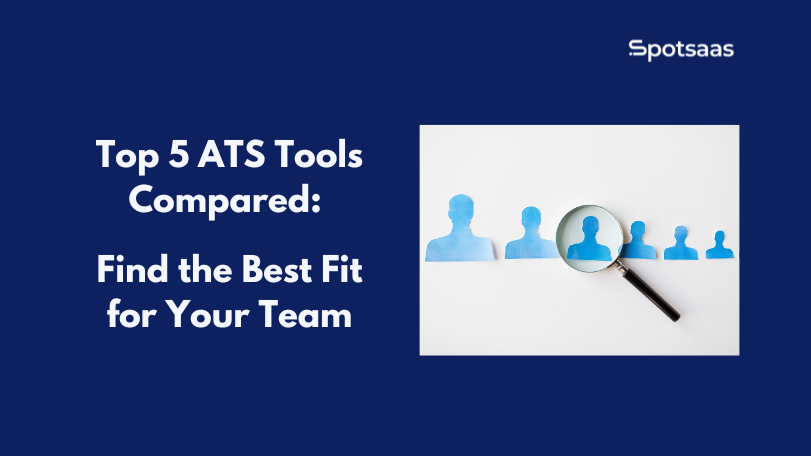Our blog will take you through key factors to consider like user-friendly interfaces, robust features, compatibility, and pricing to make your choice easier. Get ready for some insider tips on selecting your optimal presentation tool!
What is Presentation Software and Why Is It Important?
Presentation software is a tool that helps you make slideshows. You can use it to show pictures, words, and videos on your computer or screen. This type of software is great for people who need to share ideas with others.
This kind of software matters much because it makes things easier to understand. It aids in easily explaining complex ideas. Also, viewers get more engaged when they see visual content instead of just hearing words spoken aloud or reading them from a piece of paper.
Key Features to Look for When Choosing Presentation Software
When choosing presentation software, it is important to consider key features such as ease of use, template options, graphic assets library, embedding third-party content, animations and transitions, collaboration capabilities, branding options, social media sharing, privacy and security features, and analytics and lead generation.
Ease of use
A tool that’s easy to use is a top choice. Presentation software like PowerPoint and Google Slides made it simple to start designing right away. They have clear buttons and options.
This makes them great for technology users of all levels.
Other tools are also made with ease in mind. Visme and Canva have drag-and-drop features, making design work quick and fun. Users can add text, shapes, or pictures to their slides without any hassle.
Template options
Template options are key in picking the best presentation software. They can save you time and give your work a good look. Many software offers ready-to-use templates. Visme, Canva, and Google Slides have many clean and stylish templates for free.
With these tools, you can create a great slideshow fast.
Graphic assets library
One important feature to look for when choosing presentation software is a graphic assets library. This allows users to access a wide range of visual elements, such as images, icons, and illustrations, to enhance their presentations.
Having a diverse collection of graphics at your fingertips can make it easier and quicker to create visually appealing slides. Some top presentation software options include Visme, Canva, and Google Slides which offer extensive graphic libraries with high-quality visuals.
You can choose from various categories and styles to find the perfect images or icons that align with your content and enhance the overall design of your presentation.
Embedding third-party content
Presentation software that allows for embedding third-party content can greatly enhance the visual appeal and functionality of your presentations. With this feature, you can easily incorporate videos, audio clips, interactive widgets, and other external elements directly into your slides.
This means you can bring in content from platforms like YouTube or Vimeo, display live webpages or social media feeds, or include interactive charts and graphs from data visualization tools.
By leveraging third-party content within your presentations, you can create more engaging and dynamic experiences for your audience while also saving time by not having to recreate all the content from scratch.
Animations and transitions
Animations and transitions are important features to consider when choosing presentation software. These elements can enhance the visual appeal and engagement of your presentations.
Look for software that offers a variety of animation effects, such as fade-ins, slide-ins, and zooms, to make your content more dynamic. Transitions, on the other hand, allow you to create smooth and seamless movements between slides or sections.
This keeps your audience focused and interested in what you’re presenting. Some top presentation software options offer a wide range of animations and transitions to choose from, allowing you to customize and bring your ideas to life in an engaging way.
Collaboration capabilities
Some of the best presentation software options offer great collaboration capabilities, allowing multiple users to work on the same presentation simultaneously. For example, Visme and Google Slides provide real-time collaboration features that enable users to edit, comment, and give feedback together.
This makes it easier for teams to collaborate effectively and efficiently, even if they are working remotely. In addition to real-time collaboration, some presentation software also offers version control features that allow you to track changes made by different team members.
With these collaboration capabilities, you can collaborate seamlessly with your colleagues or clients and create impressive presentations together.
Branding options
Choosing presentation software that offers branding options is crucial for maintaining consistency and professionalism in your presentations. With branding options, you can customize the templates, color schemes, fonts, and logos to match your organization’s brand identity.
This ensures that every slide reflects your company’s image and enhances brand recognition among your audience. Additionally, some presentation software allows you to create branded templates that can be easily shared with other team members or departments, promoting cohesive messaging across the organization.
By utilizing branding options in presentation software, you can elevate the visual appeal of your slides while reinforcing your brand’s values and message.
Social media sharing
One important feature to consider when choosing presentation software is social media sharing. With the increased use of social media platforms like Facebook, Twitter, and LinkedIn, it’s crucial to be able to easily share your presentations across these channels.
Look for software that allows you to directly upload or export your presentations to popular social media sites, making it simple for you to showcase your work and reach a wider audience.
This can help increase engagement, generate leads, and create a more interactive experience for viewers. Consider options like Visme, Prezi, and Canva which offer seamless integration with various social media platforms.
Privacy and security features
When choosing presentation software, it is important to consider the privacy and security features offered. Many top presentation software options prioritize protecting user data and ensuring secure access to presentations.
For example, Microsoft PowerPoint, Google Slides, and Keynote have built-in encryption features that keep presentations safe from unauthorized access. Additionally, these platforms often offer two-factor authentication for added security.
It is essential to select a presentation software that values your privacy and takes proactive measures to safeguard your information.
Analytics and lead generation
One important aspect to consider when choosing presentation software is its analytics and lead generation capabilities. Many top software options offer features that allow you to track and analyze data related to your presentations.
This can include metrics like the number of views, duration of engagement, and audience interaction. These insights can be valuable for understanding how effective your presentations are and making improvements.
Additionally, some software also provides lead generation tools, allowing you to capture contact information from viewers who are interested in your content. By leveraging these analytics and lead generation features, you can optimize your presentations for better results and grow your business or organization effectively.
How to Choose the Best Presentation Software for Your Needs
To choose the best presentation software for your needs, start by determining your budget and considering your specific presentation type. Look for user-friendly features, assess collaboration and branding options, evaluate privacy and security features, and consider platform compatibility.
Don’t forget to read reviews, compare options, and take advantage of free trials to make an informed decision.
Determine your budget
To choose the best presentation software, start by considering your budget. Think about how much you are willing to spend on a presentation tool. Remember that there are both free and paid options available.
Some popular presentation software programs include Microsoft PowerPoint, Google Slides, and Keynote. These programs offer various pricing plans, so you can choose the one that fits your budget.
Keep in mind that while some free options may have limited features, they can still be effective for creating basic presentations. Take into account your financial resources when deciding on the right software for you.
Consider your presentation type
To choose the best presentation software, it’s important to consider your specific needs and the type of presentation you’ll be delivering. Are you creating a slideshow for a business meeting? Teaching a class? Marketing a product or service? Different presentation types require different features and functionalities.
For example, if you want to create an interactive and visually appealing presentation, software like Prezi or Ludus might be suitable. If you prefer a more traditional approach with customizable templates, Microsoft PowerPoint or Google Slides could work well.
Take into account your desired outcome and select the software that aligns with your goals.
Look for user-friendly features
When choosing presentation software, it’s crucial to look for user-friendly features. This includes an intuitive interface that makes it easy to create and edit slides, add text and images, and apply animations and transitions.
Look for a drag-and-drop functionality that eliminates the need for coding or advanced design skills. In addition, consider if the software offers customizable templates and pre-made themes to save time and ensure professional-looking presentations.
The ability to easily navigate through the software and access tools should also be a priority. Consider options like Visme, Canva, or Microsoft PowerPoint, which are known for their user-friendly features.
Assess collaboration and branding options
When choosing the best presentation software, it’s important to assess collaboration and branding options. Look for software that allows multiple users to work on the same presentation simultaneously, making it easier to collaborate with colleagues or teammates.
Additionally, consider whether the software offers features that allow you to customize your presentations with your company’s branding elements, such as logos, colors, and fonts. This can help maintain a consistent brand image throughout your presentations.
Some top presentation software options, like Visme and Canva, provide robust collaboration tools and branding capabilities to enhance your presentations even further.
Evaluate privacy and security features
When evaluating presentation software options, it is important to consider the privacy and security features offered by each platform. Top presentation software programs such as Visme, Prezi, Canva, and Microsoft PowerPoint prioritize user data protection and provide secure access to presentations.
These platforms often offer features like password protection for presentations or encryption of data during file transfer. It is crucial to choose a software that values your privacy and ensures the safety of your confidential information when creating and sharing presentations.
Consider the platform and device compatibility
Make sure the presentation software you choose works on your computer or device. Check if it is compatible with Windows, Mac, or other operating systems. Also, consider if it can be used on mobile devices like smartphones and tablets.
Some presentation software may have limitations or require specific software versions. It’s important to make sure that the software will work well on the platforms and devices you plan to use for your presentations.
Keep in mind that different operating systems may offer different features or tools within the presentation software, so choose one that matches your needs and preferences best.
Read reviews and compare options
Looking at reviews and comparing options allows you to make a well-informed decision based on the experiences and feedback of other users. Drawing comparisons between different presentation software can highlight the strengths and weaknesses of each, helping you determine which best suits your needs and preferences.
| Software | User Reviews | Pros | Cons |
|---|---|---|---|
| Microsoft PowerPoint | PowerPoint is highly rated for its robust features and familiar interface. | Offers a wide array of templates and design options. It is widely recognized and commonly used. | It may be challenging for first-time users. It comes with a cost as part of the Microsoft Office Suite. |
| Google Slides | Google Slides receives positive reviews for its collaboration features and ease of use. | This software is free and allows real-time collaboration. It is integrated with Google Drive for easy saving and sharing. | It has limited design and formatting options compared to other software. |
| Keynote | Users appreciate Keynote for its sleek design tools and user-friendly interface. | The software is free for Apple users and has excellent graphic capabilities. | It is only available for Apple users and lacks certain advanced features. |
| Visme | Visme gets high marks for its versatile design options and interactive features. | It provides a large library of templates and graphics. It also supports interactive elements. | There is a learning curve for new users. The free version has limited features. |
| Canva | Canva is lauded for its simplicity and extensive template library. | This tool is easy to use with a drag-and-drop interface. It offers a large collection of templates and graphics. | The free version has limited features. High-quality templates and graphics require a paid subscription. |
Take advantage of free trials
Before making a decision on the best presentation software for your needs, it’s always a good idea to take advantage of free trials. Many presentation software options offer free trial periods that allow you to test out the features and see if they meet your requirements.
During this time, you can explore the user interface, try different templates and graphic assets, experiment with animations and transitions, and evaluate collaboration capabilities.
Free trials also give you an opportunity to determine whether the software is compatible with your platform and devices. By utilizing these trial periods, you can make an informed choice based on your own experience without committing any financial resources upfront.
Conclusion: The Best Presentation Software for Your Unique Needs and Goals.
When it comes to choosing the best presentation software for your needs, there are a few things to consider. First, think about your budget and what you can afford. Next, consider the type of presentations you will be creating and look for user-friendly features that can enhance your content.
Don’t forget to evaluate collaboration options and privacy features as well. Lastly, read reviews, compare different software options, and take advantage of free trials if available.
By considering these factors, you’ll be able to find the ideal presentation software that meets your unique goals and requirements.



